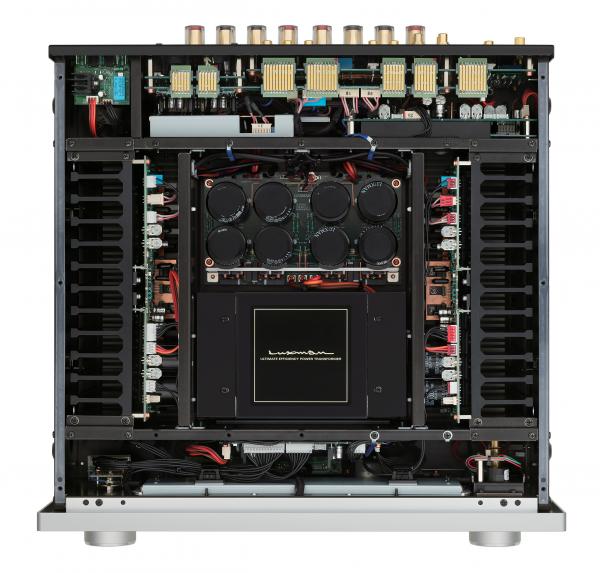Luxman L-509Z Page 2

Space-saver
The gut reaction of many audiophiles spending this much money would be to opt for separates rather than an integrated amplifier. While I agree that it makes sense in purist terms, there is undeniable charm in a unit like the L-509Z, where a host of inputs eliminates any sense of restriction or compromise and the one-box design saves space and AC outlets. Be aware, though, that despite current trends the L-509Z does not have a built-in DAC or network streaming. As PM often notes digital sources typically sound better when they are outside of, and away from, the amplification. As excellent DACs are now so inexpensive, it’s not an issue. More to the point, a number of CD players also have inputs for sharing their internal DACs – my 35-year-old Marantz CD12/DA12 did so a lifetime ago – so this is no hardship.
Two other aspects of the L-509Z also appeal to my desire for a simpler life. The first is the LECUA-EX volume control as found on Luxman’s £16,000 C-10X preamp. This has remarkable fine-tuning capabilities, whether using the remote or manually twisting the dial. You really do get to set exactly the level you want, which is crucial when listening at soft volumes.
Analogue rules
On to the listening, which revealed the other element which will please those tired of nests of cables – the L-509Z’s MM/MC phono section. As I started the listening session with vinyl, this deserves emphatic praise because it’s the exception to the rule stated above, about preferring outboard components to built-in stages.
Any phono section with only three settings might seem limiting. In the L-509Z, they are the standard 47kohm for moving-magnets, with 40ohm and 100ohm for moving-coils. (The L-509X, by the way, only had a 100ohm setting for MC, so that’s another L-509Z bonus.) Yet considering how the vast majority of MCs work perfectly well at 100ohm, and that both of the MC settings yielded more than enough output for the various cartridges I used, I can’t imagine any dissatisfaction with the Luxman’s MC gain.
It was hard-bop jazz via a tight quartet which first made me appreciate the L-509Z’s freedom from solid-state edge or harshness, in particular both Herbie Hancock’s piano and Joe Henderson’s sax on the latter’s Power To The People [Milestone/Craft CR00655]. There was a valve-like warmth, but when called for, a rapidity to the transient attacks which spoke of the amplifier’s speed and precision. Given that most of my listening was through easy-to-drive speakers, heft, mass and SPLs were never a concern while life-like levels were always easily achieved. Of course, reverting to LS3/5As meant keeping an eye on the decibels, but even they benefitted from this amplifier’s competence and composure.
In the right place
What surprised me the most were the last bars of the last track on Henderson’s LP, the ‘Foresight And Afterthought’ suite. It was a bass fade-out, so smooth and consistent and delicate that I was reminded, too, of why vinyl still trumps digital. But then I had one of those volte-face moments thanks to Dr John’s In The Right Place SACD [Analogue Productions CAPA006SA].
Where was the digital edginess, the lack of air? So mellow, open and spacious was the sound that I had to try two different players born 20 years apart and two DACs of wildly different vintages – 1995 and 2024 – to make sure it was not the front-end nor the SACD format in general that were responsible for the silkiness. Nope: the L-509Z is a seductive powerhouse that could have been voiced by the boffins back in Japan who tune the company’s valve products. Dr John’s piano had all the richness and ringing worthy of a New Orleans maestro, while his heavily textured vocals were nasal and gritty in equal measure.

























































